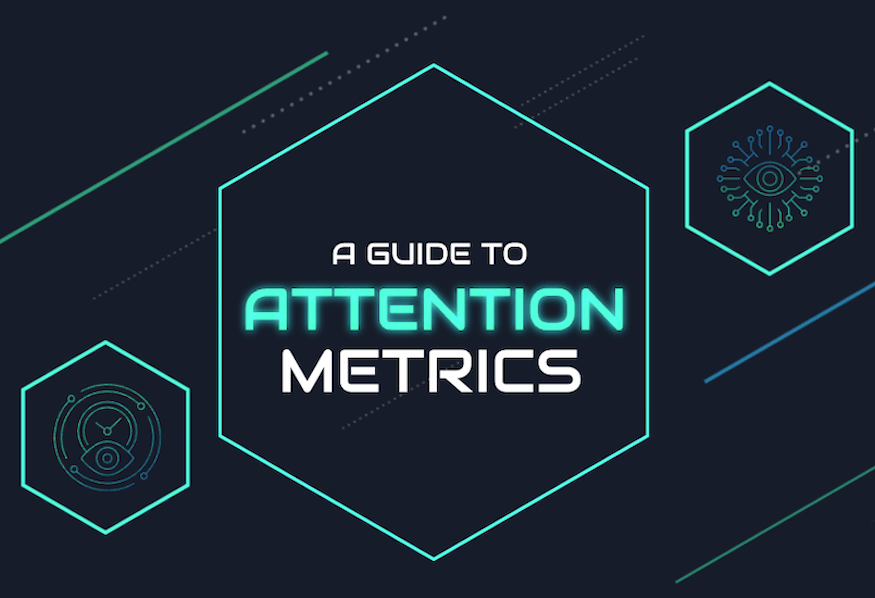This is part of 10X10, our year-long series covering the Top Ten Trends in digital media. This month's topic: Creative.
Content, context, and creativity
In a cluttered digital landscape in which cookie-driven targeting is receding, the resonance of ads depends on their conception, content, and construction.
Data-driven marketing strategies and AI-powered programmatic delivery can do a lot to get the right content in front of the right person at the right time. Also, that contextual targeting is becoming more essential than ever. But will the content that arrives then catch the eye, stay with the viewer, even get them to act?
With user engagement becoming an essential factor in effective marketing, many marketers are accelerating their investments in dynamic new formats that help capture consumers’ attention, engage them, and inspire them to action.
Here are some of the most exciting and effective new formats to deliver resonant creative messaging.
Conversational advertising
Great campaigns are informed by deep analysis of the data, built around strong creative concepts, delivered in the right contextual environments, and experienced through formats that encourage deeper engagement. The right applications in the right mix can’t help but improve marketers’ results.
Conversational advertising provides valuable engagement during a two-way exchange of useful information that helps brands meet consumers’ desires while guiding them through their customer journey.

The benefits of conversational advertising can be boiled down to two main points: Partaking in something makes us enjoy it better, and remember it better. Simultaneously, asking people which shoes they are interested in ensures a vastly more accurate answer than cookie-guessing at what they’re looking to buy.
Gabrielle D'Mello, conversation designer, UK, Cavai
Unique benefits of conversational ads
Conversational advertising lets marketers create interactions that parallel human speech. It engages customers in a tone that matches the brand. Marketers can customize messages to audience segments to make the conversations — yes, they’re more than messages — truly resonate. Plus, the conversational threads provide useful data that can help optimize current and future campaigns and even be extrapolated for lookalike marketing to discover more prospects.
What to know about conversational ads
Conversational advertising lets brands tailor offers according to a user’s known attributes and their responses within the ad in real time.
Preparation, data-driven strategy, and clearly defined parameters are imperative to success in conversational advertising. Marketers will create a conversational tree that must be carefully crafted from the outset of a campaign. Putting the work in at the front end is essential for creating interactions that feel natural and provide a meaningful exchange.
Marketers should be ready to quickly shift conversations towards trending priorities as conditions change — a lesson many have learned all too well during the past year.
Adding conversational to the mix can be as simple as utilizing pre-existing assets, and shaping a conversation around it. Almost any product can spark a discussion, if we just center it intuitively around what we know people care about.
Gabrielle D'Mello, conversation designer, UK, Cavai
Dynamic video and audio
Dynamic video and dynamic audio lean heavily on contextual data to adapt and deliver highly relevant content in real time, integrating cues such as weather, location, and time of day.
Brands 'have to learn how to communicate simultaneously in many different ways, so being very personalized and very specific in their messaging in order to direct consumers in the best way to purchase products. … The impact of the technology is that it automates the production of different types of messaging and different versions of messaging and essentially eliminates the manual work that they would otherwise have to pay for.'
Diaz Nesomoney, Founder, President, CEO, Jivox
Unique benefits of dynamic video and audio ads
Dynamic video goes beyond traditional dynamic creative optimization (DCO) to allow deeper and richer design of the user experience. Videos may match the weather or day-part. Overlays and elements can change according to circumstance. Adjustments match the messaging to the audience.
Dynamic audio, delivered through smart speakers and other smart devices, can similarly change according to the audience and conditions on the ground.
The ability to capture context and communicate through that lens results in an ad experience that is inherently more relevant to the audience.
What to know about dynamic audio and video ads
It’s important that dynamic video is used on the right networks connecting to the right devices. Some technologies used across the web are not yet fully adapted to all CTV devices, so the content needs to be created and categorized diligently. When using dynamic audio, marketers must make sure to create plenty of variations and assets so that they can meet a range of potential circumstances.
Messaging should be kept simple while targeting across a broad enough segment to provide the reach that will deliver results. Overly narrow targeting will require too many precise variations and can become inefficient. It’s best to devise customizable messaging that plays across a broader segment, then optimize as you go.
More than half (51.9%) of respondents [to research] say they are more likely to purchase a product or service after having seen or heard a personalized ad.
A Million Ads, "The Power of Personalization"
With such a wide variety of tools, publishers can be more creative than ever before. When you can integrate more enjoyable interactive features into websites, you can create experiences that complement your media and work with the flow of the content.
Nikki Gertner, senior product manager, Celtra
Interactive video and playable ads
Interactive video and playable ads allow for powerful engagements with users by enabling them to interact with multiple elements within an ad. Brands can guide their viewers through an experience that they control.
Unique benefits of interactive video and playable ads
Interactive video and playable ads literally allow users to click into them, to select a location or a product from a gallery of images. Elements like pricing or additional product information can also be laid in. And consumers can even click to buy. These self-contained shoppable elements and intuitive interactivity can lead to high levels of engagement. And, as with dynamic ads, elements can change according to condition such as weather or time of day.
What to know about interactive video and playable ads
By letting users shop and buy products from right within an ad, interactive videos let brands gain insights about customers which can help them develop increasingly effective campaigns. The ads can also give the users more control over the experience, letting them selectively interact with the brand without requiring them to click through to another destination.
For example, a video ad for a car might include hot spots that allow a user to mouse over and highlight features of the car. Or a beer ad can let them seek out live local sporting results or locate a vendor near them. Situational triggers are available, too, to further customize for the moment.
Playable ads create micro games within an ad that engage users with a brand. They can also be used as a way to encourage or even incentivize engagement without requiring a clickthrough. And they open the door to extensive creative possibilities.
It's important to note that some of these applications have technical limitations, for example working only in environments that use VAST and VPAID standards. Certain interactive and playable applications require additional resources that may demand extra memory or processing power on a device or be limited by a browser. Privacy restrictions may hinder some types of data from being passed through for certain levels of playable advertising.
When considering playable ads, marketers also should keep the target audience and brand personality in mind. Not every brand’s image works with game-ified messaging. (Should life-saving pharmaceuticals or staid financial institutions use playable ads?)
While it’s possible to layer in a lot of dynamic possibilities along with the interactivity these formats afford, it’s best to keep them separate to make execution easier.
New applications like these can inspire lots of exciting creative possibilities, but marketers should always keep their goals and audiences in mind when exploring them. Don’t pursue them just for the novelty. Always ensure that relevant information is being provided to the user. The ad format should elevate the message, not obfuscate it.
And remember that many users are operating on mobile screens, so simple interactions like a tap or swipe are ideal in interactive ads, while also saving on processing resources.
Last mile delivery ads
Fast delivery services have been rising in prominence along with the rise of e-commerce. Now, platforms that deliver a product or service within an hour are experimenting with ads that drive consumers directly to last-mile fulfillment partners.
Unique benefits of last mile delivery ads
Last mile delivery ads can delight users with nearly instant gratification. The ability to provide targeted offers, personalize delivery options, and immediate fulfillment can serve as major boosts to ad effectiveness. They can be dynamically optimized based on the user's location and product inventory to ensure relevancy. And since marketers’ messages are delivered in a wallet environment, they can increase the purchase levels of relevant products, making them a valuable e-commerce tool.
What to know about last mile delivery ads
As users get just what they want in moments, marketers gather great data. Because the data come from purchase actions in a clear and controlled environment, it’s fully declared and not probabilistic. The data can then be mixed with data based on previous behaviors and demographic details for greatly enhanced results.
Last mile delivery application technology is still maturing and being tested in many markets around the world. Availability is highly dependent on local conditions. As we learn the technology and help it stabilize and scale, marketers will want to be judicious in using it, to learn from tests and make sure to gather data that will be of use in future campaigns.
Retail media (including last-mile delivery) 'is really an opportunity to build a relationship with the shopper, to get closer to them … where they’re in the shopper mindset, with their credit card in hand.'
David Haase, chief revenue and development officer, CitrusAd
The People of Programmatic Podcast Episode 4: A Deep Dive into Retail Media
Data. Creativity. Technology.
Relevance. Resonance. Results.
Great campaigns are informed by deep analysis of the data, built around strong creative concepts, delivered in the right contextual environments, and experienced through formats that encourage deeper engagement. The right applications in the right mix can’t help but improve marketers’ results.






